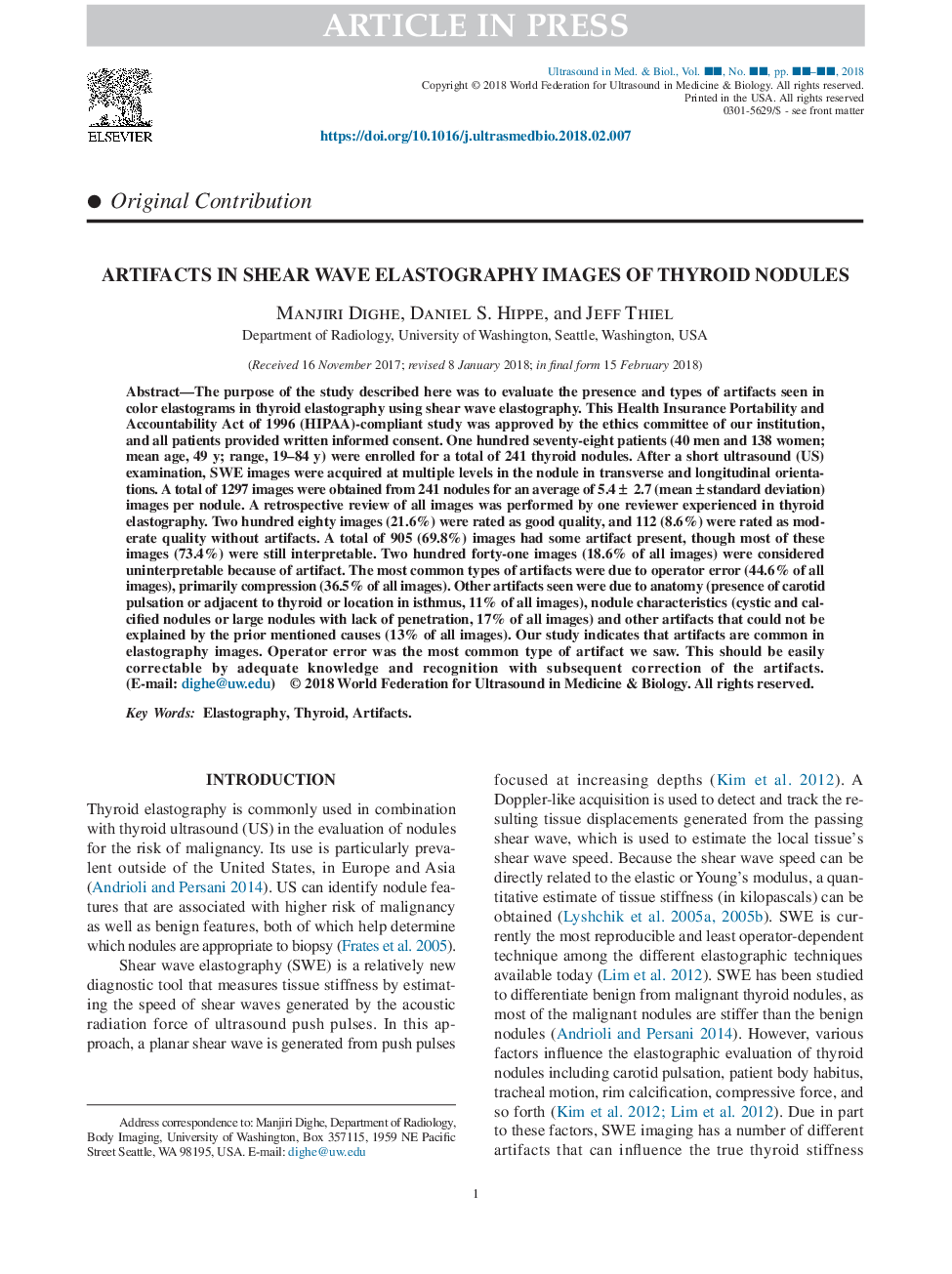| کد مقاله | کد نشریه | سال انتشار | مقاله انگلیسی | نسخه تمام متن |
|---|---|---|---|---|
| 8131047 | 1523232 | 2018 | 7 صفحه PDF | دانلود رایگان |
عنوان انگلیسی مقاله ISI
Artifacts in Shear Wave Elastography Images of Thyroid Nodules
ترجمه فارسی عنوان
مصنوعات در الستوگرافی موج برشی تصاویری از تیروئید ندول
دانلود مقاله + سفارش ترجمه
دانلود مقاله ISI انگلیسی
رایگان برای ایرانیان
کلمات کلیدی
الستوگرافی، تیروئید، مصنوعات،
موضوعات مرتبط
مهندسی و علوم پایه
فیزیک و نجوم
آکوستیک و فرا صوت
چکیده انگلیسی
The purpose of the study described here was to evaluate the presence and types of artifacts seen in color elastograms in thyroid elastography using shear wave elastography. This Health Insurance Portability and Accountability Act of 1996 (HIPAA)-compliant study was approved by the ethics committee of our institution, and all patients provided written informed consent. One hundred seventy-eight patients (40 men and 138 women; mean age, 49 y; range, 19-84 y) were enrolled for a total of 241 thyroid nodules. After a short ultrasound (US) examination, SWE images were acquired at multiple levels in the nodule in transverse and longitudinal orientations. A total of 1297 images were obtained from 241 nodules for an average of 5.4â±â 2.7 (meanâ±âstandard deviation) images per nodule. A retrospective review of all images was performed by one reviewer experienced in thyroid elastography. Two hundred eighty images (21.6%) were rated as good quality, and 112 (8.6%) were rated as moderate quality without artifacts. A total of 905 (69.8%) images had some artifact present, though most of these images (73.4%) were still interpretable. Two hundred forty-one images (18.6% of all images) were considered uninterpretable because of artifact. The most common types of artifacts were due to operator error (44.6% of all images), primarily compression (36.5% of all images). Other artifacts seen were due to anatomy (presence of carotid pulsation or adjacent to thyroid or location in isthmus, 11% of all images), nodule characteristics (cystic and calcified nodules or large nodules with lack of penetration, 17% of all images) and other artifacts that could not be explained by the prior mentioned causes (13% of all images). Our study indicates that artifacts are common in elastography images. Operator error was the most common type of artifact we saw. This should be easily correctable by adequate knowledge and recognition with subsequent correction of the artifacts.
ناشر
Database: Elsevier - ScienceDirect (ساینس دایرکت)
Journal: Ultrasound in Medicine & Biology - Volume 44, Issue 6, June 2018, Pages 1170-1176
Journal: Ultrasound in Medicine & Biology - Volume 44, Issue 6, June 2018, Pages 1170-1176
نویسندگان
Manjiri Dighe, Daniel S. Hippe, Jeff Thiel,
